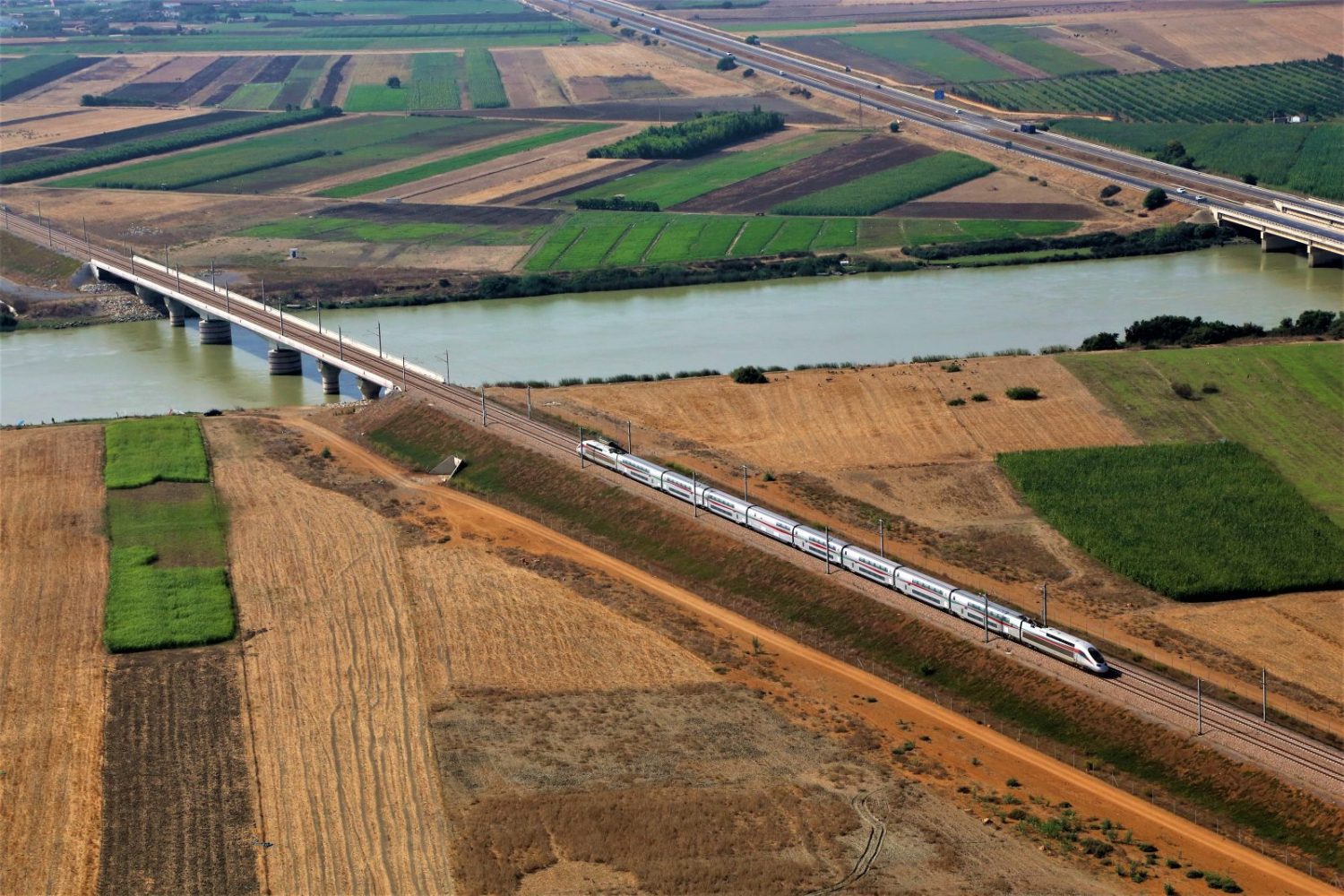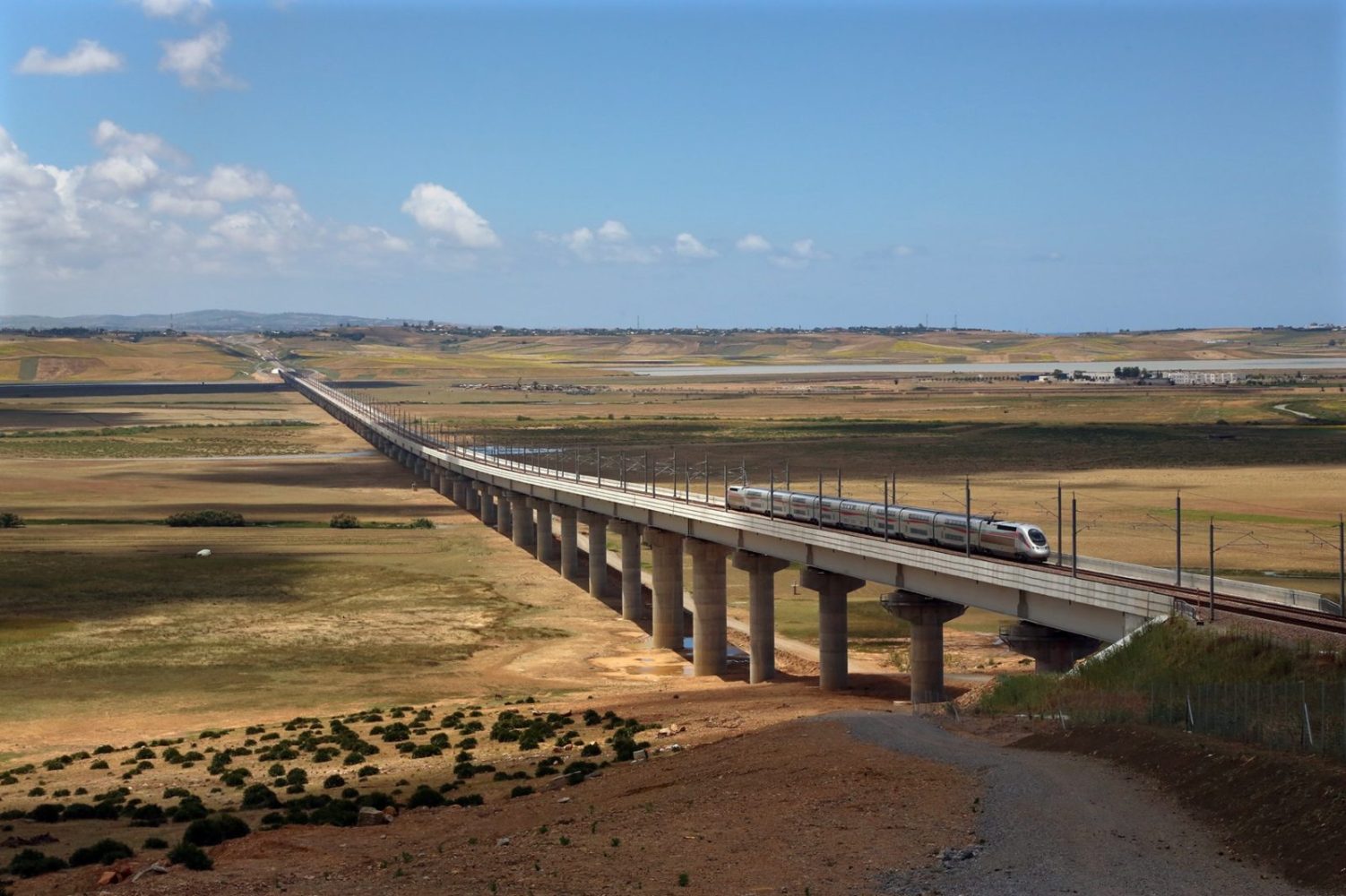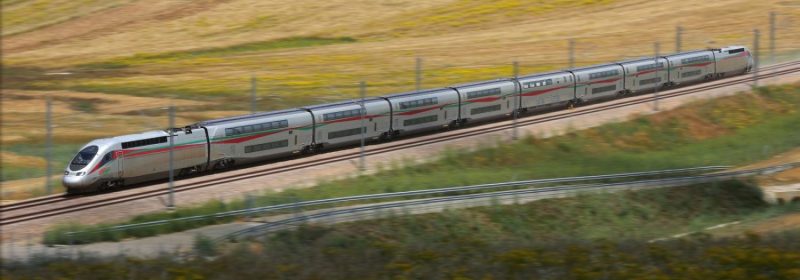Tonnes of CO2 reduced yearly
Million tonnes of CO2 reduction over 30 years
Renewable energy by 2030
Direct jobs created with contractors
of civil engineering work conducted by local companies
million people with improved acess to transportation
Since 2010, Morocco’s CO₂ emissions have increased at an average rate of 3.5% per year. According to an International Energy Agency report on Clean Energy Innovation Policies in Emerging and Developing Countries, the country emitted 67 million tonnes of CO₂ in 2021, primarily from imported fossil fuels used to meet its energy needs.
In a bid to reduce CO₂ emissions, Morocco has embarked on an ambitious energy transition, with the Moroccan National Railways Office (ONCF) playing a key role in advancing sustainable development. ONCF has launched a series of transformative projects aligned with the country’s energy goals, including Africa’s first high-speed rail service powered entirely by wind energy. This groundbreaking initiative highlights Morocco’s leadership in green infrastructure and climate-conscious innovation.

To finance this visionary project, ONCF issued Morocco’s inaugural Green Bond in 2022, securing 1 billion Moroccan dirhams (roughly £80 million). This bond, the first in Morocco’s infrastructure sector, enabled ONCF to refinance the construction of the high-speed rail link connecting Tangier to Kenitra. The initiative brought together a range of strategic partners, including CDG Capital, and the European Bank for Reconstruction and Development (EBRD).

Facilitated by FSD Africa, these partnerships ensured that the Green Bond adhered to the highest standards of sustainable financing, setting a precedent in Morocco’s journey toward green investment and environmentally responsible development.

The high-speed rail line has already begun to redefine mobility in Morocco, reducing travel times and connecting cities at an unprecedented pace. For individuals like Hicham, a young technician from a nearby town, this project represents much more than an impressive engineering feat. Before the construction of the high-speed line, Hicham’s job opportunities were limited, often demanding long hours away from his family. Today, he works in ONCF’s maintenance division, ensuring that the line’s operations run smoothly and safely. This role has given him both a stable income and a newfound pride in being part of something that directly contributes to his country’s fight against climate change. Its environmental benefits are equally significant, with an anticipated reduction of over 2.5 million tonnes of CO₂ emissions over the next 30 years—equivalent to the planting of four million trees.
2025 © FSD Africa
Designed and developed by Smith Aegis